After the suppression of the Indian uprisings in New England in 1675-8, and the failure of Bacon's Rebellion in Virginia in 1676, the slave master aristocracy of Virginia and the soon to be enslaved Carolinas and points south, as well as the religious slave master oligarchies of Pennsylvania, New York and New England, took deliberate measures to divide and rule the lower classes. These measures differed from colony to colony. Below is a brief overview, understanding that these were not static societies, but ever-evolving programs of human enslavement and bondage.
New England
With the hair-breadth defeat of the Indians, at great cost, Indians were dropped from the New England social fabric altogether, no longer even listed as possible conscript soldiers or servants, with those captured in King Phillip's War sold into slavery to the Caribbean sugar islands.
The white servant class was elevated to the status of possible military conscripts, given a provisional right to bear arms, although they were barred from advancement to officer status, even if elected by the troops. Blacks were now barred from serving as military conscripts. Household slave staffs numbered between 1 and 10, with 3 to 6 being the norm, with white slaves generally outnumbering blacks by a five-to-one margin, though more so on rural plantations than in the towns, where blacks were highly favored as household servants.
New York
There is not enough transitional evidence in my possession at the time of this work to differentiate unfree life in New York from the previous period. Outside of Manhattan New Yorker's did enjoy an alliance with the Iroquois Confederacy, and, as the largest port on the Atlantic, handled increased shipments of black slaves, though the lack of evidence for shipments of white kidnapping victims and other white slaves indicates that the bulk of the white slave trade remained further south in the Chesapeake and Delaware ports.
Pennsylvania
Blacks were only held in small numbers as personal man servants and household servants, with the vast majority of unfree people being Scotch, Irish and English kidnapped children, prisoners of war, convicts, and voluntary indentures. In rural areas the population was largely unarmed, intentionally at the mercy of Indians, who served as frontier security and slave catchers, until they sided with the French in the 1750s, which triggered a mass flight of white slaves from Maryland and Pennsylvania.
In Pennsylvania, blacks were regarded by the Quaker ruling class as superior to white indentures, but inferior to free whites.
Maryland
Few Black slaves could be afforded during the this period as the smaller scale tobacco farms of Maryland could generally only afford the cheaper, and less reliable, white slaves, who deserted in large numbers when Pennsylvania was attacked by French-backed Indians at the end of this period.
Virginia
Virginia was almost toppled by a alliance of unfree and poor whites and blacks. This would not be permitted again, especially after the tobacco-cutting riots that came on the heels of the brief, brutal war. Although our American mythology explains Bacon's Rebellion as being caused by poor whites wanting Indian land, and the upper class siding with the Indians, who they "valued as trading partners," the fact was that the Indians in question were trading white scalps for guns with the Governor. One Indian fort at the location of Richmond Virginia held a store of 3,000 pounds of gunpowder! The rich Virginians needed a method of keeping indentures on the plantation and also of encouraging freed indentured servants [of which between 5 and 50% of indentured servants lived to see freedom, depending on the shipment conditions, and current plantation conditions] to remain as overseers and sharecroppers.
At no point in Virginia history, did the slave masters ever consider giving land to released indentures, but either cheated them of it, or paid the Indians to murder them when they tried to claim it. They would eventually force the descendants of these jilted white slaves to drive off the Indians to make way for expansion of their tobacco farms. And, in the final death throws of the Virginian oligarchy, tens of thousands of poor white Virginians would be slain defending the plantations of the grandsons of those men who had bought, enslaved and cheated their own ancestors from the Union armies of the North.
After Bacon' Rebellion, wealthy elites wiped out the remaining Indians and took their land, putting the lie to the fanciful modern motivation of the benign slave masters. The information on Bacon's Rebellion is so skewed online, that I have elected not to provide links, as none of these links were free of slave master bias and the anachronistic African narrative. We must keep in mind that less than 1 in 10 of the rebels were black slaves, with blacks, free and unfree [some owning slaves] numbering only 2,000 in all of Virginia, with 10% [200] fighting on the side of the indentures, and that the slave masters of Jamestown actually employed free blacks in similar, though less effective, numbers as soldiers in its defense. There were numerous factions of both black, Indian and white, rich and poor on both sides of the conflict. Bacon himself was not a white slave, but an adventurer.
The black slave trade was expanded twenty fold over the previous period, and the white slave trade was scaled back from what seems to have been 10,000 per year to perhaps a thousand. However, white slaves could be had at any time, from the descendants of freed indentures, by demanding that a poor white person produce freedom papers to a slave-catching patrol. If he failed to produce such papers he could be sold for up to 14 years of servitude. Also, the child born to any white woman out of wedlock, could be confiscated by a church warden [note the term of the religious patriarch] and sold for a 21 year term of service.
White slaves were now housed separately from blacks, and paid upon their release, to encourage loyalty. They were not given land upon release, as had been promised and denied on in the previous period, but paid off, and then induced to take up service as slave drivers, slave catchers and Indian fighters. Here, Virginia, with it's deliberate reduction in negro rights and expansion of poor white duty, served as the model for the mature plantation society of the next era.
Carolina
A bizarre exception to the Virginia rule, Carolina had many settled Indians who alternately made passible slaves and stalwart enemies. The poverty of the young colony made importation of large numbers of blacks inpractical, and with the use of Scottish POWs as slaves, experienced numerous white slave rebellions, which forced the plantation owners to import black slaves, arm them, and use them as slave-hunting and anti-guerilla troops, for which many were awarded military certificates.
The Carolina slave experience began with whites being owned by Indians in 1600, then in 1700 of whites [some escaped from Virginia], Indians and blacks allying together to fight the slave masters, with blacks being imported to fight rebellious white servants between 1702-42, and ended at the close of the period, and ensuing Indian unrest with, blacks being disarmed and put to work on plantations, as the rowdy whites were then courted as Indian fighters by the landed elite, who encouraged their erstwhile escaped property-turned enemy, to drive the Indians off of their ancestral lands and homestead, foreshadowing George Washington's Ohio policy advanced in 1783, and in the meantime, drawing disgruntled Pennsylvanians, like the Boone's, south, to breech the Appalachian barrier on it's Southern extreme, accessing the Ohio Watershed via the Cumberland River system, as the French had no effective military presence in this theater.


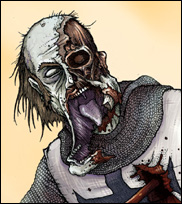
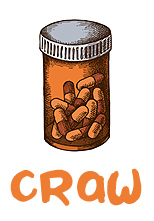
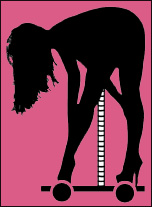
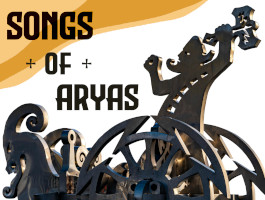
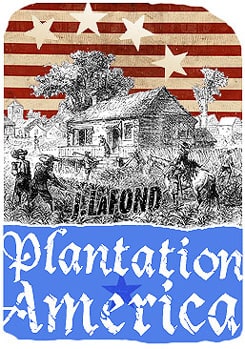
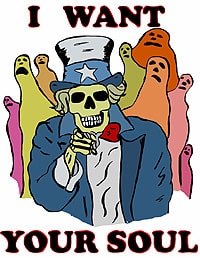
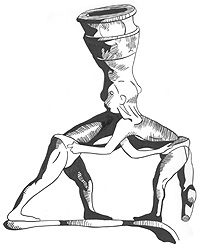
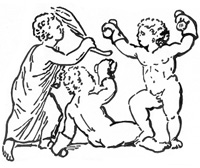

There was recently a kerfuffle when Democratic presidential candidate Bernie Sanders was asked about reparations.
Which made me immediately think, how would LaFond respond?
But i don't think they mean the Catawba Indian Nation in Carolina paying back whitey a few pelts...
I myself am for reparations which forfeit the takers US citizenship,
because you can't have your cake and eat it too, it's one or the other.
On the backside of the check would be a ticket back home to Liberia!
Reparations have been in force since 1913.
I still pay reparations—as little as possible—I might add.
There is also the fact that those who benefitted from slavery of blacks deftly switched the burden of reparations to the backs of the newly freed whites, which no one has taken notice of among the general herd.
The best part of this ruse is the lie that slavery has ended. We are all slaves now, even the president. Have you seen that guy's schedule? He doesn't write it, by the way—has about a s much free will as your hat.
I would have to say that the greatest slave master victory was the revisionist history job done in the 1800s, which cast slavery as a racial practice, thereby insuring the fanatical and mindless African American support of any administration that speaks the sacral words, effectively re-chaining every African American who is not content to be hated by his fellows, to the new slave system, to which they are no more than the overseer's bloodhounds were to the plantation masters of old.